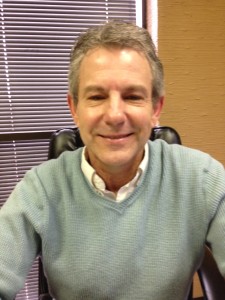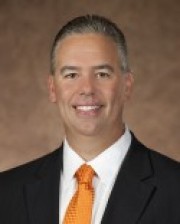Family Physician – Mentor, Dr. Barry Troutman
Summary
Dr. Troutman followed an unusual career path. He initially completed a business degree in marketing, worked for several years in sales and then went back to college to become a pharmacist before he decided to pursue a medical degree. His story has a common element with many YPNG Mentors who grew up in small towns. None of them had a privileged background. But they all became successful in their careers because they developed a strong work ethic. Besides describing what he does in his practice, Dr. Troutman also shares his perspective on the future of medicine in the United States given the changes in insurance coverage and government regulations. His article should be read not only by people who are considering a career in any field of medicine but also by anyone interested in a doctor’s perspective on how escalating insurance costs and increasing regulations are affecting the quality of health care in the US.
Overview
 I grew up in a small, rural community with a high school that did not have a strong science curriculum. Although some people who graduated from my high school became pharmacists, no one that I knew ever became a doctor. So I never considered medicine as a realistic career choice when I went to college. If fact, I was not sure of what career I wanted to pursue for the first two years of college. So I enrolled in a general arts and sciences program. But because I had only a limited science background from the rural high school I attended, the college science classes became more difficult. I switched to business and graduated with a major in marketing. I ended up working three years in sales for two different companies. During the third year, my employer told me that I would have to go on 100% commission with no salary. I also saw many people in similar sales positions getting laid off as they got older and replaced with younger people even after working many years for the company. I also did not think these companies were stable, which turned out to be a correct assumption. None of the companies I worked for during this time are still in business. So I made the decision to go back to college and become a pharmacist. I had friends from my hometown who had gotten degrees in pharmacy and I worked in a local pharmacy growing up, as did some of my family. Quitting a job and going back to school at that age focused my mind and gave me the incentive to study hard. I did well academically in all my classes because I was motivated to get a return on my investment of time and money and I studied very hard. Failure to me at that point was not an option.
I grew up in a small, rural community with a high school that did not have a strong science curriculum. Although some people who graduated from my high school became pharmacists, no one that I knew ever became a doctor. So I never considered medicine as a realistic career choice when I went to college. If fact, I was not sure of what career I wanted to pursue for the first two years of college. So I enrolled in a general arts and sciences program. But because I had only a limited science background from the rural high school I attended, the college science classes became more difficult. I switched to business and graduated with a major in marketing. I ended up working three years in sales for two different companies. During the third year, my employer told me that I would have to go on 100% commission with no salary. I also saw many people in similar sales positions getting laid off as they got older and replaced with younger people even after working many years for the company. I also did not think these companies were stable, which turned out to be a correct assumption. None of the companies I worked for during this time are still in business. So I made the decision to go back to college and become a pharmacist. I had friends from my hometown who had gotten degrees in pharmacy and I worked in a local pharmacy growing up, as did some of my family. Quitting a job and going back to school at that age focused my mind and gave me the incentive to study hard. I did well academically in all my classes because I was motivated to get a return on my investment of time and money and I studied very hard. Failure to me at that point was not an option.
During the time I was taking courses to become a pharmacist, a friend of mine encourage me think about going to med school and becoming a doctor. I took the Medical College Admissions Test and scored high enough to be accepted. When I graduated, I spent one year as an intern and two years as a resident in different medical areas including an emergency room. I then went out and worked first for a clinic and later for a corporation that wanted to provide in-house medical services to their employees. I didn’t like the environment in the corporate run program. There were quotas on how many people you had to see each day and other restrictions that I felt did not allow me to give the best care to my patients. So after three years I went out and started my own practice. I have now been in private practice for 13 years.
Being a Family Physician
The first question they ask you when you are interviewed for Medical school is why do you want to become a doctor. The answer I gave and most people give is to be able to help people. To me this means being able to give my patients the best care possible. This is why I chose to go out and start my own practice rather than continuing to work at a clinic or hospital for a salary. As a family doctor in private practices I have control over how many people I see each day, which allows me to set my own schedule so that I can spend the time necessary to listen to my patients. That extra time means that I can do better diagnostic work. When I was working for a salary at the clinics, I had quotas and was expected to see between 25 and 30 patients per day. In my private practice, I limit my patient load to between 15 and 20 patients per day and can still make the same income as I did working for a salary because I can control my own overhead costs better than a clinic.
The reason that I picked family practice over becoming a specialist is that I enjoy meeting a variety of people, dealing with different medical conditions each day and having the opportunity to develop a long-term relationship with my patients. A family physician can begin treating someone when they are a child and continue all the way through them becoming an adult with their own children. Consequently, my family practice gives me the opportunity to build strong, long term relationships with my patients.
Family practice also means you are on the front lines of the health care system. Few specialists will see patients without a referral from their primary care physician and all reports from the specialists are given to me as the patient’s primary care physician. So you have the opportunity to be actively involved in all phases of your patient’s care. You also can do things outside your primary practice that gives you the opportunity to interact with other physicians and patients. I teach four hours per week at a local medical school and also cover for doctors when they are on vacation. But it is becoming more difficult to maintain a private practice.
Issues Facing Private Practice Doctors
Billing the various insurance companies requires you have a staff that can navigate the complexities of the insurance system. One example, most all insurance polices are different. People have many different kinds of deductibles and co-pays in their policies. Likewise the insurance companies often have different payment schedules for the same procedure. This is especially true for the various kinds of government sponsored insurance programs like Medicare and Medicaid. For example, my billing rate is $95 for an office visit. The various private insurance companies pay on average about $71 for an office visit while Medicare pays $53. There are co-pays and supplemental policies that can make up some of this difference. But my experience is that government insurance programs reimbursements are between 70% and 80% of the reimbursement rates for private insurers. This means that although I want to help everyone I can, for economic reasons I can’t take on new patients with Medicare or other government sponsored insurance when they become about 30% of my practice. This is a concern for me, as I know many other doctors in family practice who have to do the same thing to balance their income and expenses. With the aging of the population and many more people going on Medicare, it is going to be more difficult to find physicians who will be able to accept the growing number of Medicare patients.
The other thing that is making it more difficult to maintain a private practice is the mandatory move towards electronic medical records. Right now you pay a 1% penalty when you file a paper claim for Medicare reimbursement. But eventually I expect that doctors will be forced by all the insurance companies to automate all their medical records. The basic computer system is expensive and cost about the same to implement for an individual doctor in private practice as it does to implement for a group of physicians. Once these systems are in place, there are going to be ongoing system maintenance issues. This may make it impossible for people like me in an individual practice to remain independent in the future and force us into group practices or clinics where this kind of business overhead can be spread over more than one doctor. I also believe that the need for electronic medical records and the expense of installing and maintaining theses systems is going to force rural doctors to relocate, which is where there already is a large doctor shortage.
Medical malpractice insurance is also high and adds to a doctor’s cost of doing business that in turn raises what a doctor must charge his patients to cover the insurance premiums. I believe that a person should be able to sue to recover damages if they were harmed by their medical treatment. But in my opinion, many of the awards given by juries are excessive and have contributed to escalating insurance costs. I think that legislatures should set limits on what can be awarded for medical malpractice as a way to help control the escalating cost of this kind of insurance and that this type of legislation would help hold down medical costs for the entire country. I know that there are a few state legislatures that agree and have taken this step. I would also like to see some way for the court system to screen medical lawsuits that are clearly without merit and laws that would reimburse doctors or their insurance companies for the expense of defending a suit that was determined by the court to be frivolous.
Medical Insurance and Health Care Costs
The reason that a band aide costs $10 in an emergency room is that emergency rooms are required by law to treat everyone. So many low-income people without insurance go to emergency rooms. Consequently about a third of the people who are treated there do not pay or cannot pay. I believe that everyone should be required to carry basic medical insurance just like they are required to have basic auto insurance. But it must be made affordable. I know the Affordable Care Act was an attempt to do this. But it is not working as well as it should based on my experience. For example, everyone was supposed to be covered for preventive care examinations. But in an effort to keep insurance premiums down, the insurance companies increased deductibles and co-payments. As a result, people with the new, high deductibles are less likely to see a doctor for needed disease management. This result is contrary to the intent of the law and means I no longer have the opportunity to catch health problem they may be developing early. Early diagnosis was supposed to be one of the benefits of the AFC and was supposed to reduce health care cost by diagnosing problems when they were less expensive to treat. But instead I am seeing fewer people able to afford their out of pocket costs.
I also believe that insurance companies should provide more monetary incentives for people to live healthier life styles. For example, these companies now charge a higher insurance premium for people who smoke because they have a higher risk of heart and lung disease as well as cancer. But other life style choices like overeating and becoming obese also pose a significant health risk to the patient like diabetes, heart disease, asthma and cancer. All these are expensive to treat and raise everyone’s insurance rates. Providing financial incentives by penalizing those people who are making poor lifestyle choices will not only benefit the patient if they make those changes but also reduce the cost of overall medical care for the US and the insurance rates for everyone.
In my opinion, the insurance reimbursement for primary care physicians is too low to attract enough people into the field to meet the growing need of an aging US population. A family physician is the lowest paid doctors in the medical profession, which drives many doctors to go into specialty practices. If we are going to attract the increasing number of primary care physicians that will be necessary to deal with the increasing number of elderly and allow us to give people the primary care that will help control health care costs, there will have to be more economic incentive for doctors to enter family practice. The gap now is just too large to attract the number of primary care doctors we are going to need to meet this growing demand.
There have been rules put in place so that pharmacy reps can no longer give doctors such things as pens, take you to lunch or give you any other considerations. The reason given was that buying doctors lunches or taking them on trips had the appearance of undue influence on the doctor’s decision about what drug to prescribe. That is one reason why you are seeing more adds for new drugs on television. But there needs to be some way for pharmaceutical companies to educate doctors about new drugs so that the companies know that if they invest money in a new drug, they have the ability to develop a market. I don’t see as much money going into developing new drugs as I did in the past. Consequently, I am concerned that there will not be the pipeline of new drugs like antibiotics that have to constantly be in development to address the evolution of bacteria that allows them to develop resistance to older drugs. I don’t have a good answer for this. But it is something that everyone in the medical profession and the pharmaceutical industry need to consider.
Preparing to Become a Doctor
It is important to be taking all the science classes your high school offers. Science classes are the core of the curriculum in pre med and in medical school. You should take full advantage of all the science classes offered in your high school.
There are also programs for high school students called preceptorships where high school students can follow a doctor for a day or even a week to get an idea of what the physician does each day. Look for these kinds of opportunities to help you decide if medicine is a career you want to pursue.
Getting into colleges and medical school is competitive. More people apply each year than are accepted. To be able to compete you need to have a good work ethic. This is especially true when you enter medical school, as you will be studying constantly for four years and then going on to an internship and then a residency. An internship lasts for one year. A residency lasts two years for a primary care physician and four or five years for many specialties. While you start making money as an intern an in your residency program, you don’t make much money until after you enter your practice.
Be prepared to accept the sacrifices you have to make to become a doctor. The expense of medical school, the long hours and the low salary until you begin practicing can put a strain on you, and if you are married, on your marriage and your children. Make sure that you and your spouse discuss this fact and are prepared to deal with the intensity of your studies and the limited income. I am an example of someone who underestimated the strain the intensity of medical school can place on a marriage as I was both married and divorced my second year of medical school.
Medical school is expensive and many doctors graduate with large amounts of student loans. It is difficult for many doctors to comfortably manage this debt burden. But here are ways to minimize this cost. If you are willing to serve in the military for a few years after you graduate, they will pay your tuition. Many rural areas where there are shortages of primary care doctors also offer programs where the community will pay your tuition if you agree to come to that community and serve after your graduation.
The Business Aspects of a Private Practice
Being in private practice means that you are running your own business and face the same problems as any other businessperson. You have to hire and train nurses and staff who handle your accounting, billing and patient records. You have to sign leases or build your own office space. You have to budget and know your costs of doing business. Some doctors join group practices because they do not want to have to do this kind of business management. You have to decide if you want to accept this kind of responsibility if you want to have a private practice.
All doctors also must attend continuing education courses to maintain their licenses. These classes cost money to attend not just for the fees for the classes but also for the lost income when you cannot see patients for several days. There are also several professional associations you must join to maintain your licenses. You must budget for these expenses.
Summary
Doctors do have good incomes and as a doctor you are also respected in your community. It is also a personally rewarding career as you have the ability to positively affect the lives of many people. But the medical profession is changing. A senior in high school will not complete their residency and begin their practice for ten to twelve years from now depending on the field of medicine they choose. There is a real possibility that escalating costs for physicians in private practice for record keeping and billing will mean that more and more doctors may be forced into working for a salary rather than being able to run a private practice.
All medical costs have escalated faster than what is sustainable long term. This means that there will be constant pressure to reduce medical costs and part of that will put more pressure on a doctor’s reimbursements. While I believe that being a doctor will always provide a good income, doctors are not likely to be paid as much compared to other professions in the future as they are now.
Medicine to me is personally rewarding career worth the hard work to get your education and the amount of work you have to perform each day as a doctor. It is something every young person with the ability to handle the academics and the desire to help many people and positively affect their lives should consider as a career.
US Bureau of Labor Wage Statistic for Family and General Practitioners May 2013
The Bureau estimates there were approximately 120,860 people employed as Family and General Medical Practitioners at the time of the survey.
Salaries ranged from a low of $76, 500 for the bottom 10% to a high of over $189,000 for the top 10% with a median salary of $176, 560.
Salaries for Family and General Practitioners are sensitive to regional variations with the highest paid doctors in Hawaii, Nebraska, Kansas, Iowa and Arkansas. The average mean wages were up to $220,000 in Hawaii and well over 200,000 in the other four states. There are also regional differences within a state. For example, some of the highest paid general practitioners were in the more isolated rural areas of Oklahoma and Texas.
 The demand for all types of physicians and surgeon is projected by the Bureau to grow by 18% between 2012 and 2022, a rate that is much higher than for other occupations.
The demand for all types of physicians and surgeon is projected by the Bureau to grow by 18% between 2012 and 2022, a rate that is much higher than for other occupations.







